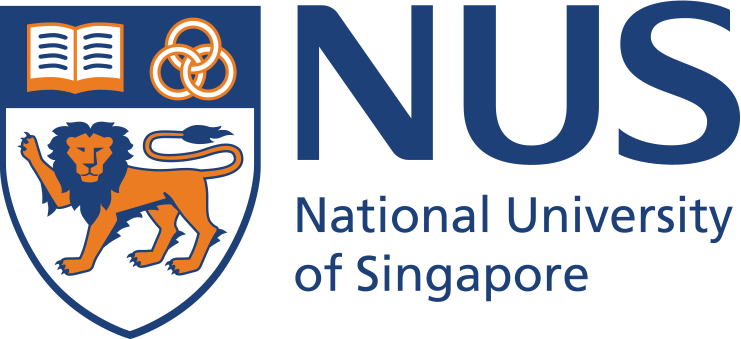Biography
Dr Pang Sze Dai is a leading figure in sustainable construction and structural engineering, widely recognised for his contributions to low-carbon materials, resilient urban infrastructure, and circular economy solutions. At the National University of Singapore (NUS), he is Dean’s Chair Associate Professor and Deputy Head (Academic Matters) of the Department of Civil & Environmental Engineering. He also serves as the Founding Director of the Centre for Resource Circularity and Resilience (CR²), Co-Director of the Built Environment 4.0 Initiative, and Research Associate at the Sustainable and Green Finance Institute.
Dr Pang’s research has advanced the frontier of carbon sequestration in waste mineralisation, high-performance lightweight composites, modular construction technologies, and resilient structural systems, particularly on ageing buildings and infrastructures. His translational work has shaped building standards and industry practices in Singapore, with applications adopted by agencies such as BCA, JTC and LTA. As co-founder of Circrete — a start-up transforming marine clay into durable, low-carbon cement — he has demonstrated how academic innovation can drive industry transformation and support national decarbonisation goals.
A passionate and award-winning educator, Dr Pang has received multiple NUS Teaching Excellence Awards and Faculty Educator Awards. He is celebrated for his student-centred, design-driven pedagogy, and his mentorship has nurtured a new generation of engineers and innovators. The students he has mentioned have won multiple awards at the faculty and university levels, which include the Faculty Innovation and Research Awards. At the international level, the teams that he had mentored for the annual international earthquake design competition had won top awards for multiple years.
Beyond academia, Prof. Pang is an active contributor to the profession. He is Vice-Chairman of the IES-IStructE Joint Committee, Council Member of the Singapore Structural Steel Society, and serves on the Singapore Accreditation Council. Internationally, he has been Associate Editor of Nature Materials Sustainability and sits on editorial boards of leading journals. His expertise is recognised through frequent keynote invitations at major global conferences on sustainable and resilient construction.
With multiple innovation awards and over S$26 million in research leadership, Dr Pang’s work continues to deliver both scientific breakthroughs and practical impact. His leadership bridges research, industry, and policy — positioning Singapore at the forefront of sustainable and resilient urban development. He has been sought after for his expertise in structural system innovation, green concrete innovation, and material ageing and durability.
Qualifications
- 2001, B. Eng. (Civil, 1st Class Honours), National University of Singapore
- 2002, M. Eng. (Civil), National University of Singapore
- 2005, Ph.D. (Theoretical and Applied Mechanics), Northwestern University
NUS Administrative Positions
- Programme Manager for NUS M.Sc. (Civil) and M.Sc. (Geo) (2008 – 2010)
- Curriculum Coordinator for NUS CDE Innovation & Design Programme (2012 – 2014)
- Associate Head for NUS CEE (Academic Matters) (2015 – 2016)
- Deputy Head for NUS CEE (Undergraduate Academic and Student Matters) (2016 – now)
- Co-Director for NUS CEE Built Environment 4.0 (2020 – now)
- Director for NUS Centre for Resource Circularity and Resilience (2023 – now)
- Research Associate for NUS Sustainable and Green Finance Institute (2022 – now)
Honours & Awards
- MSc (Construction Engineering) Class of 1977 Silver Medal, 2001
- Walter Murphy Fellowship 2004, 2005
- NUS Sports Awards – Supportive Staff Award 2011
- Faculty of Engineering Innovative Teaching Award 2009
- Faculty of Engineering Educator Award 2008, 2009, 2010, 2011, 2020
- FoE/CDE Teaching Excellence Award 2017, 2018, 2019, 2021, 2022, 2023, 2024
- Engineering Educator Award (Honour Roll) 2012
- University Annual Teaching Excellence Award 2008, 2009, 2011
- University Annual Teaching Excellence Award (Honour Roll) 2012
- Singapore Concrete Institute Excellence Award (Innovators Category) 2013
- Singapore Concrete Institute Excellence Award (Innovators Category) 2022
- Silver Medal in Project Competition, ACI (Singapore Chapter), 2021
Professional Activities
National Committees
- Vice-Chairman, IES-IStructE Joint Committee (2018 – now)
- Council Member, Singapore Structural Steel Society (2013 – now)
- Co-Chairman, Workgroup for iBuildSG Tripartite Committee (2021 – 2023)
- Member, iBuildSG Tripartite Committee (2023 – now)
- Taskforce Member, BCA Built Environment SkillsFuture Tripartite (BEST) (2019–2021)
- Workgroup Member, BCA BEST Communication and Engagement (2019–2021)
- Committee Member, S’pore Accreditation Council’s Tech Committee (2015–now)
- Committee Member, S’pore Accreditation Council’s Workgroup (2020–now)
International/Regional Committees
- IStructE (UK) Research Panel (2020 – 2022)
- IStructE (UK) Education Committee (2019 – 2023)
- Chair, 26th KKHTCNN Symposium on Civil Engineering (2013)
- Chair, 6th International Symposium on Reliability Engineering and Risk Management (2018)
- Chair, 33rd KKHTCNN Symposium on Civil Engineering (2022)
- Chair, 11th Asia-Pacific Forum on Structural Engineering (2025)
- Chair, 5th Asian Concrete Federation Symposium (2025)
Research Areas
Green Materials and Circularity
Developing low-carbon, high-performance building materials through waste upcycling, carbon sequestration, and alternative binders. His research translates industrial and urban waste streams — including marine clay, demolition debris, and carbon capture by-products — into durable green construction materials, advancing Singapore’s circular economy and decarbonisation goals.
Resilient and Innovative Structures
Designing lightweight, durable, and climate-resilient structural systems. His work spans prefabricated and modular construction, advanced composites such as bio-based fibre-reinforced polymers, and protective designs against extreme loading. These innovations strengthen the safety, adaptability, and longevity of the built environment.
Digitalisation and AI for the Built Environment
Harnessing digital technologies and artificial intelligence to transform construction and infrastructure management. His current projects integrate machine learning and advanced testing to enable predictive building assessments, optimise material performance, and accelerate sustainable design adoption.
Research Funding and Projects ($27.5 million as PI/Co-PI)
- 2006 – 2009, Bio-inspired design of engineering structures, Principal Investigator, Academic Research Grant Tier 1, S$150k
- 2009 – 2013, Design for disassembly building systems for Singapore, Collaborator, Ministry of National Development Research Grant, S$1,204k.
- 2009 – 2013, Cementitious nano-composites for the building and construction industry, Principal Investigator, A*Star SERC Research Grant, S$629k.
- 2012 – 2016, Novel cellular structural system for protection against impact and projectiles, Principal Investigator, Mindef, S$710k
- 2015 – 2017, Scaling of buried composite arch subjected to internal blast loading, Principal Investigator, DSTA, S$600k
- 2014 – 2019, Numerical Modelling of Ice-Structure Interaction, Principal Investigator, NRF, S$1,044k
- 2014 – 2019, Interaction of Thick Ice Against Sloping Structure, Co-Principal Investigator, NRF, S$1,044k
- 2016 – 2021, Fast-Track Modular Construction for High-Rise Building, Co-Principal Investigator, NRF, S$3,000k
- 2017 – 2020, Exploratory Research on Gel-Injected Composites for Building Energy Efficiency, Principal Investigator, MOE, S$160k
- 2018 – 2021, Fast installation connection design for steel and composite structures, Principal Investigator, JTC, $750k.
- 2021 – 2026, Development of Design Guidelines for Precast Concrete and Steel-Composite Structures against Progressive Collapse, Co-Principal Investigator, MHA, S$7,000k
- 2021 – 2023, Resilient Building Façade with Robust Material Testing and Machine Learning Framework, Principal Investigator, NRF, S$1,149k
- 2022 – 2025, Alternative Sand from Carbon Dioxide and Waste Materials, Lead Principal Investigator, NRF, S$7,644k
- 2025 – 2027, 3D Concrete Printing for Prefabricated Prefinished Volumetric Construction (3DCP–PPVC), Co-Principal Investigator, $420k
- 2024 – 2026, Making Low-Carbon Concrete from Construction and Demolition Waste, Co-Principal Investigator, $160k
- 2024 – 2026, Recycling Carbon Capture By-products as Green Cement to Decarbonise Concrete, Co-Principal Investigator, $250k
- 2025 – 2027, AI-Based Framework for Building Condition Index for Ageing Building Assessment and Management, Principal Investigator, $100k
- 2025 – 2028, Bio-based FRP as a Novel Low-Carbon Corrosion Protection Technology for Steel Structures, Principal Investigator, $1,500k
Keynote/Plenary/Invited Lectures
- Keynote Lecture at 2nd International Conference on CO2 Mineralisation in Construction Materials and Products, Jul 2026.
- Keynote Lecture at 2nd International Conference on Condition Assessment, Rehabilitation & Retrofitting of Structures, Dec 2025.
- Keynote Lecture at World Engineers Summit (WES), 2025.
- Keynote Lecture at 1st International Conference on Thermal Treatment and Resource Recovery (T2R2), 2025.
- Invited Lecture at Gordon Research Conference on Accelerating Sustainable Concrete Construction, 2025
- Keynote Lecture at 10th International Conference on Concrete under Severe Conditions – Environment and Loading (CONSEC), 2024.
- Keynote Lecture at 1st International Symposium on Urban Lifeline in Jul 2024.
- Invited Lecture at 1st International Conference on Research and Application of Carbonation Technology for Wastes and Concrete, 2024.
- Invited Lecture at IES Seminar on How Climate Change Impacts Engineering Solutions, 2025
- Invited Lecture at IES Seminar on Low-Carbon Transition for the Built Environment, 2024
- Invited Lecture at World Engineers Summit, Nov 2023.
- Invited Lecture at Circular Cities Summit 1.0, Nov 2023.
- Keynote Lecture at Pacific Structural Steel Conference in Oct 2023.
- Invited lecture at IIT Madras at the workshop “Technologies for Low-Carbon and Learn Construction, Jan 2023.
- Invited lecture at BCA Building Engineering Seminar, Sep 2022.
- Invited lecture at LC3 Info Day held in Singapore, Aug 2022.
- Invited virtual lecture to a global audience at the American Concrete Institute’s 24 hours of Concrete Knowledge on the topic of “Circularity in Urban Development: Excavated Waste Marine Clay for Cement and Filler Replacement”, Jul 2022.
- Invited lecture at 1st International Forum on Polar Offshore Engineering 2017
- Invited lecture at 2nd International Forum on Polar Offshore Engineering 2018
- Keynote lecture at 9th National Ice Engineering Symposium of China 2018
- Invited lecture at Workshop on “Mathematics of Sea Ice Phenomena” at Isaac Newton Institute for Mathematical Sciences, Cambridge University, 2017
- Invited lecture at KAIST, 2018
- Invited lecture at HKUST, 2018
- Invited lecture at Harbin Institute of Technology, 2018
- Invited lecture at GrapChina, 2015
Editorial and Scientific Committees
- Associate Editor: Nature Materials Sustainability (2023 – now)
- Editorial Board: Functional Composites and Structures (2019 – now); Nature Scientific Reports (2021 – 2024)
- Scientific Committee: The International Conference on the Environmental and Technical Implications of Construction with Alternative Materials (WASCON), 2026; 2nd International Conference on Condition Assessment Rehabilitation & Retrofitting of Structures (CARRS) 2025; 12 International Conference on Advances in Steel Structures (ICASS) 2025; 4th International Symposium on Industrialized Construction Technology (ISICT) 2025; 10th International Conference on Concrete under Severe Conditions – Environment and Loading (CONSEC), 2024; 1st International Conference on CO2 Mineralization in Construction Materials and Products (CMCMP), 2024; 1st International Conference on Research and Application of Carbonation Technology for Wastes and Concrete, 2024;International Conference on the Environmental and Technical Implications of Construction with Alternative Materials, 2023; 1st International Conference on 3D Construction Printing (3DCP), 2018; International Conference on Structural Engineering, New Technology and Methods (ICSENM), 2016;


